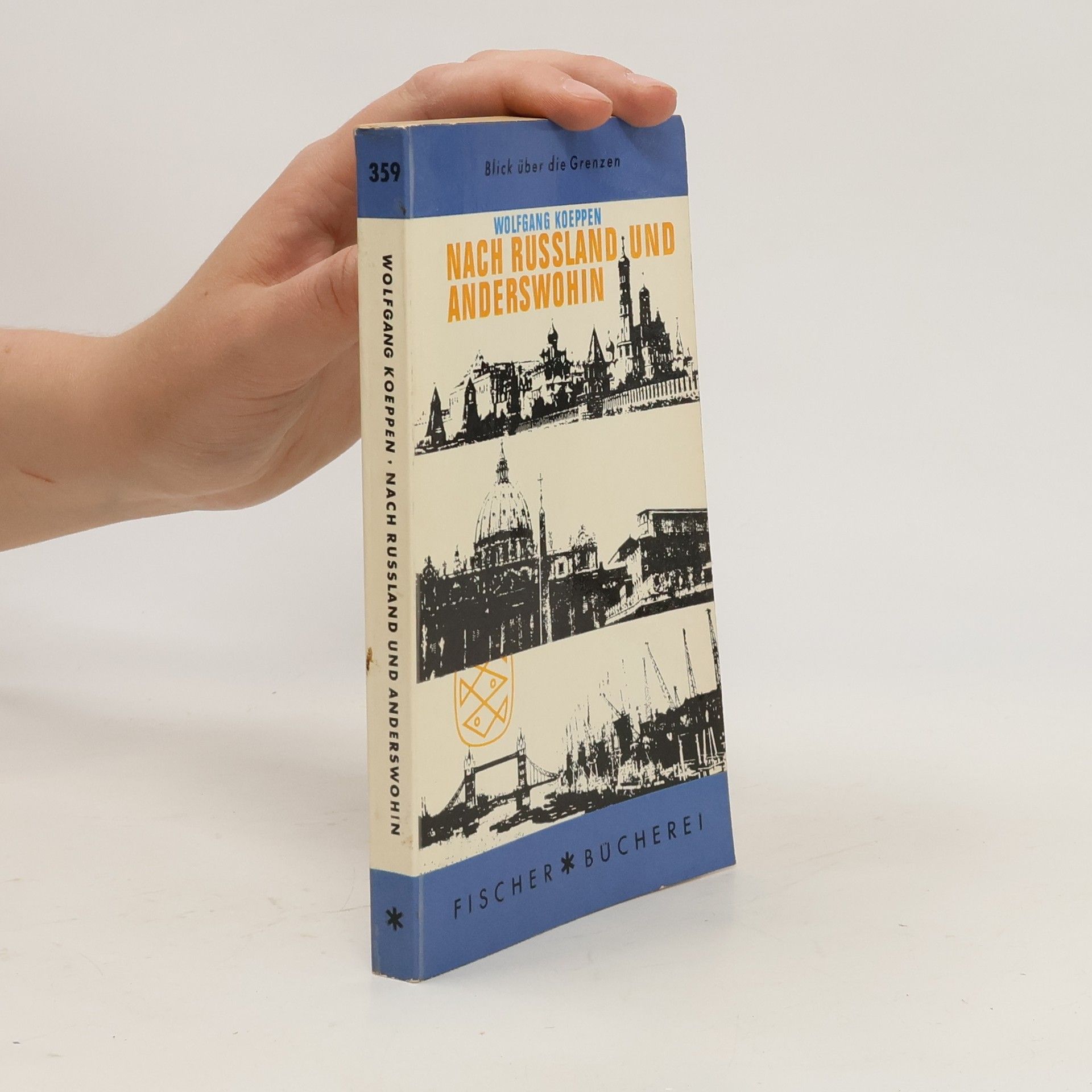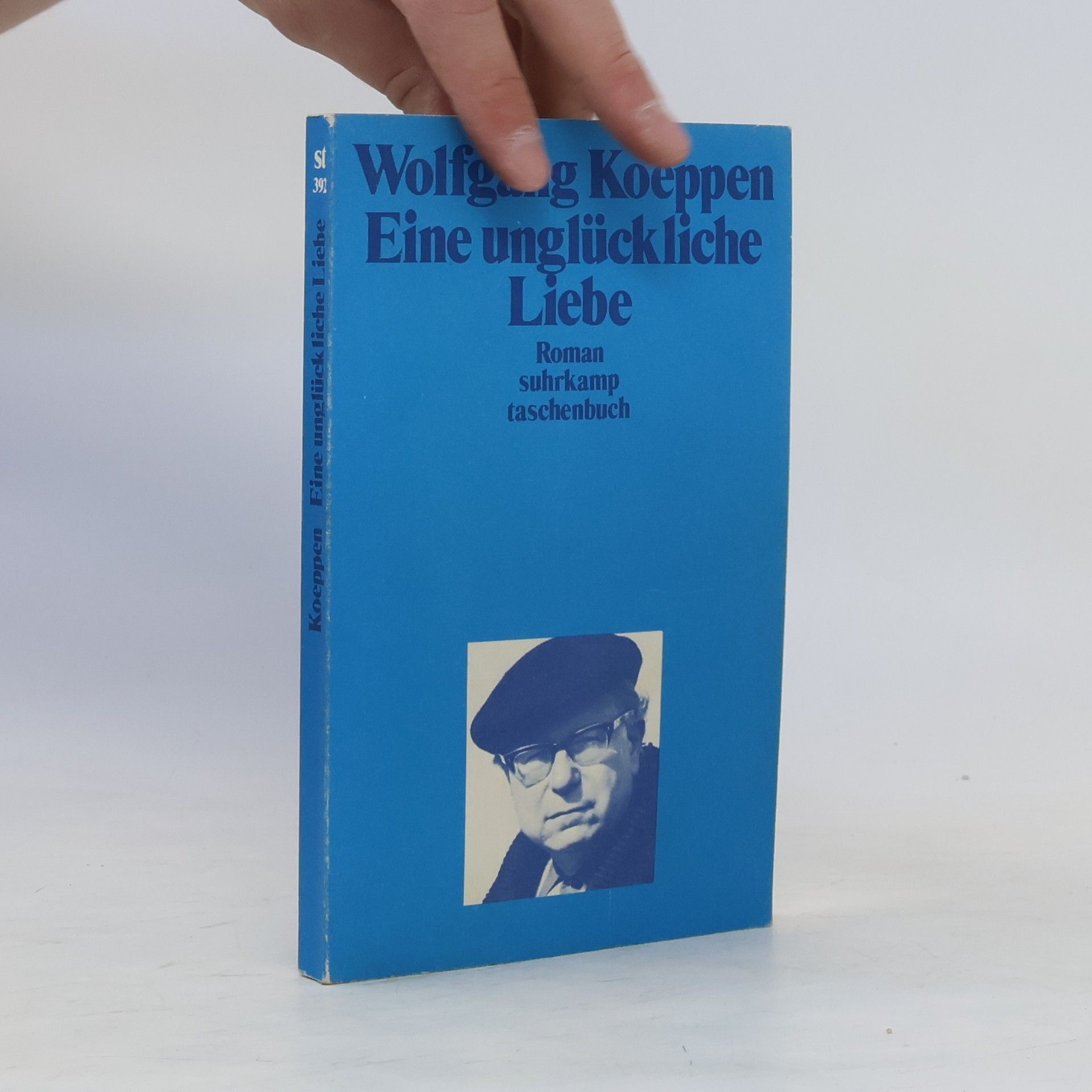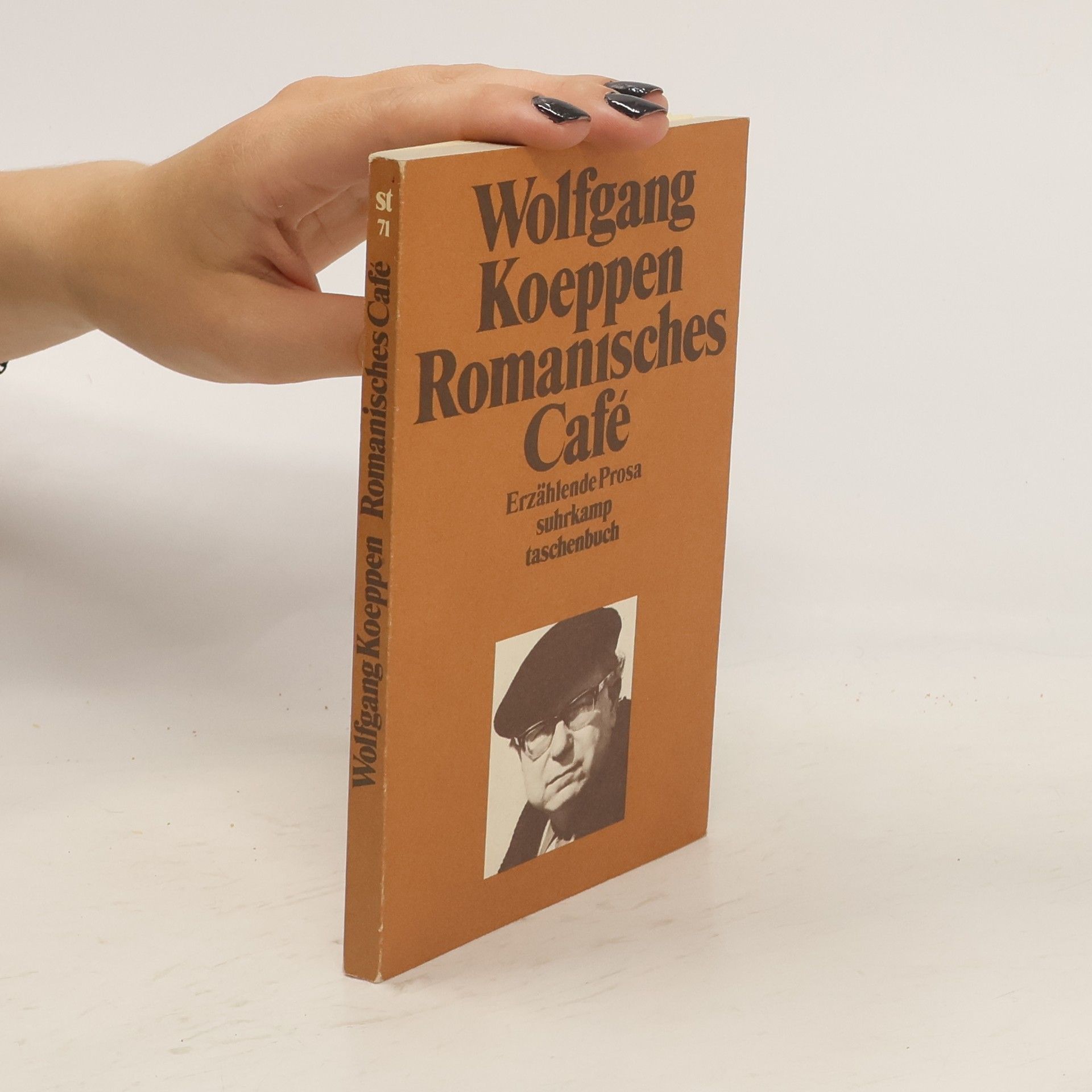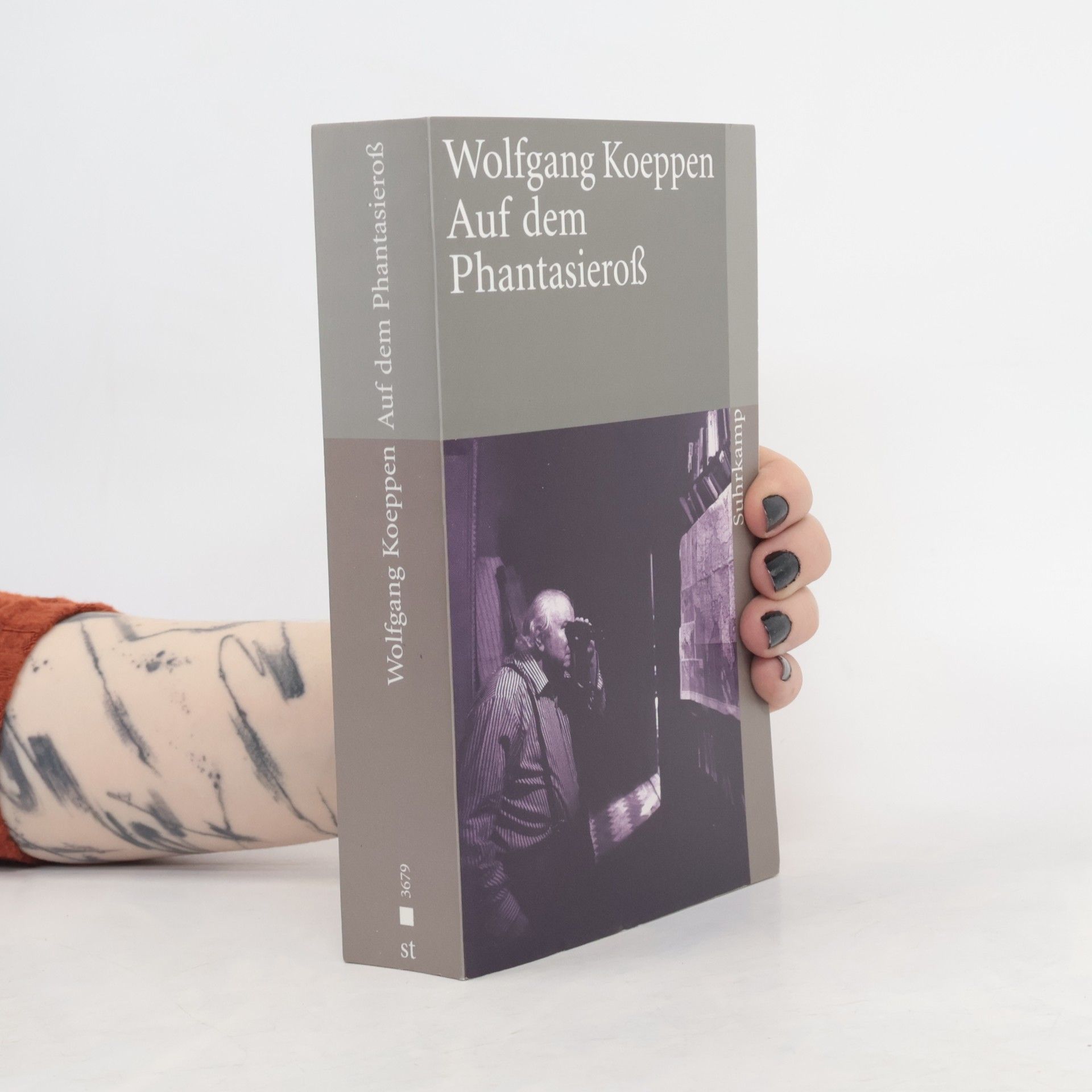"Dans les années 1950, un jeune compositeur allemand, Siegfried, est en Italie pour assister à la première de sa symphonie. En attendant, il erre dans Rome. Alors qu'il se pensait libéré des siens, il aperçoit des memebres de sa famille et croise son oncle, un ancien haut-dignitaire nazi. Il maudit la démocratie et croit en un IVe Reich. Cela projette sur le présent l'ombre d'un passé qui menace d'engloutir Siegfried". --Page 4 de ;a couverture
Wolfgang Koeppen Livres
Wolfgang Koeppen s'impose comme l'un des auteurs allemands les plus marquants de l'après-guerre. Ses œuvres se distinguent par des techniques littéraires modernes, telles que le flux de conscience, et explorent en profondeur les thèmes de l'identité et de la société dans la période d'après-guerre. Le style distinctif de Koeppen capture les complexités de l'expérience humaine, et son importance littéraire est reconnue pour son impact sur la littérature allemande.







Pigeons on the Grass
- 208pages
- 8 heures de lecture
"Pigeons on the Grass is told over a single day in Munich in 1948. The first new cinemas and insurance offices are opening atop the ruins, Korea and Persia are keeping the world in panic, planes rumble in the sky (but no one looks up), newspaper headlines announce war over oil and atomic bomb tests. Odysseus Cotton, a black man, alights at the station and hires a porter; Emilia sells the last of her jewelry; Philipp gives himself up to despair; with their interracial love affair, Carla Behrend and Washington Price scandalize their neighbors-who still expect gifts of chocolate and coffee; a boy hustles to sell a stray dog; Mr. Edwin, a visiting poet, prepares for a reading; Frau Behrend disowns her daughter; Alexander stars as the Archduke in a new German Super-production; and Susanne seeks out a night to remember. In Michael Hofmann's words, "in their sum, they are the totality of existence." Koeppen spares no one and sees all in this penetrating and intense novel that surveys those who remain, and those who have just arrived, in a damaged society. As inventive as Joyce and as compulsively readable as Dickens, Pigeons on the Grass is a great lost classic"-- Provided by publisher
German
Die "unglückliche Liebe", der dieser Roman seinen Titel verdankt, resultiert aus der leidenschaftlichen, quälerischen Beziehung eines jungen Mannes zu einer Schauspielerin und Kabarettistin. Friedrich liebt Sibylle. Aber seine Liebe wird nicht so erwidert wie von ihm erhofft. Er reist ihr nach, tut alles, um von ihr erhört zu werden, doch vergeblich: Der versäumte erste Kuß vollzieht sich später bei der Trennung in Venedig: "Sie wußten, daß sich nichts geändert hatte und daß die Wand aus dünnstem Glas, durchsichtig wie die Luft und vielleicht noch schärfer die Erscheinung des anderen wiedergebend, zwischen ihnen bestehen blieb." Entsagend finden sich Friedrich und Sibylle mit jener "Wand" ab, die sie zwischen sich sehen: "Es war dies eine Grenze, die sie nun respektierten." So ist Eine unglückliche Liebe letztlich ein Buch der Resignation, eine Buch der hoffnungslosen Vereinsamung des Individuums, der tragischen Vereinzelung des Menschen.
Der Text beschreibt eine melancholische Reise durch verschiedene Themen wie Verlobung, Einsamkeit, Anarchie und Thanatologie, mit Bezug auf Orte und Emotionen, die in einem romantischen Café zusammenfließen.
Angst. Erzählende Prosa
- 112pages
- 4 heures de lecture
Auf dem Phantasieroß
Prosa aus dem Nachlaß
Halte mich in gutem Angedenken auf meinem Phantasieroß - so schrieb Wolfgang Koeppen in seinem letzten Brief an seinen Verleger Siegfried Unseld. Damit kennzeichnete er die sein Schreiben prägende Lebenshaltung: Ihn lockten die Flügel des Ikarus und der Zauberteppich des Märchens. Zugleich wies er damit die Legende vom verstummten Erzähler zurück. Der erste Band erzählender Prosa aus dem Nachlaß mit bisher 170 unveröffentlichten Texten widerlegt diese Legende eindrucksvoll und zeigt die durch die Jahrzehnte ungebrochene Fabulierfähigkeit dieses Autors. Die Sichtung des Nachlasses des 1996 Verstorbenen hat ergeben, daß Koeppen, auch wenn er wenig publizierte, sehr vieles, sehr Gelungenes geschrieben hat. Seine Arbeitsweise erklärt, warum er sich selten zur Publikation entschloß: Seine Erzählungen schrieb er wieder und wieder um, sie waren für ihn nie fertig, er besaß ein ständiges Verfeinerungsbedürfnis. In sieben Teile hat der Herausgeber die Prosa Wolfgang Koeppens unterteilt: Sie beginnt mit frühen Versuchen aus dem Jahre 1923 und endet mit der letzten veröffentlichten Erzählung Koeppens: Im Hochsitz.



